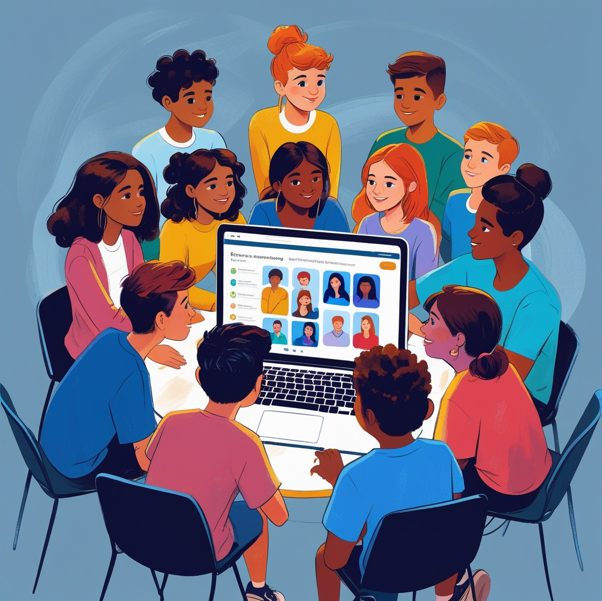
@ShahidNShah


We offer different types of treatment for teens struggling with mental health and substance abuse. Our programs range from full-time residential care to part-time outpatient services. This way, we can help each teen in the way that works best for them. It’s like having different levels in a video game – you start at the level you need and move up as you get better.
Knowing about these different care levels helps parents and teens make good choices about treatment. It’s important to understand what each option offers, kind of like picking the right tool for a job. Let’s look at the different programs we have and how they can help teens get better.
| Key Takeaways |
|
Our residential treatment program is for teens who need a lot of help. It’s like going to a special school where you live and focus only on getting better. Here’s what you can expect:
This program is great for teens who need a fresh start away from home. It’s a chance to learn new, healthy ways of living without distractions.
PHP is like a halfway point between living at the treatment center and going home. Teens come for treatment during the day but sleep at home. This program helps:
Teens practice what they learn in treatment at home, get back into their normal life slowly, keep getting therapy and medical help if needed, and learn how to avoid falling back into old habits. It’s good for teens who’ve finished residential treatment but aren’t ready to go back to normal life completely.
Our Intensive Outpatient Program lets teens get treatment while still going to school or work. It’s like having a part-time job of getting better. IOP includes:
Therapy sessions a few times a week, learning how to avoid drugs and alcohol in real-life situations, group meetings to make friends who are also trying to stay sober, family therapy to help at home, and regular drug tests to make sure teens are staying on track. This program is great for teens who are ready to use their new skills in everyday life but still need some help.
Outpatient care is for teens who are doing well in their recovery but still need some support. It’s like having a safety net while you’re living your normal life. This includes:
Meeting with a therapist once or twice a week, going to support groups, family therapy, help with medications if needed, and learning more about staying healthy and sober. It’s perfect for teens who have a good support system at home and are ready to handle most of their daily life on their own.
We know that sometimes teens have other mental health issues along with substance abuse. That’s why we have special programs to help with things like:
Our anxiety treatment centers help teens who feel worried or scared a lot. We teach them ways to calm down and deal with stress without using drugs or alcohol.
Our depression treatment program helps teens who feel sad or hopeless. We use therapy, sometimes medicine, and activities to help them feel better.
For teens with eating problems and substance abuse, our eating disorder treatment program helps them develop a healthy relationship with food while also addressing their substance use.
Before starting treatment, we do a thorough check to see what kind of help each teen needs. This includes looking at their health, mental state, drug use history, family situation, and school progress. It’s like putting together a puzzle to see the whole picture of what’s going on. This helps us make a plan that’s just right for each teen.
As teens get better, they might move from one type of care to another. We keep checking to see how they’re doing and change their treatment if needed. It’s like moving up or down levels in a game, based on how well you’re playing.
We believe families play a big part in helping teens recover. We have family therapy, workshops, and support groups for parents and siblings. This helps everyone learn how to support the teen and create a better home environment.
Getting better doesn’t stop when treatment ends. We have plans to help teens stay on track after they finish their main treatment. This includes check-ins with therapists, support groups, and help with school or work goals.
Research shows that having different levels of care works better for treating teen substance abuse. It’s like having a toolbox with many tools – you can use the right one for each job. This approach helps teens stay in recovery longer and do better in life overall.
When looking for a treatment program, it’s important to ask questions and find one that fits your teen’s needs. Think about things like what kinds of treatment they offer, how they involve families, and what their success rates are.
Every teen’s journey to recovery is different, and having different levels of care helps meet each teen’s needs. We’re here to help your teen and your whole family through this process. Getting help is a brave step, and it can make a big difference in your teen’s future. Don’t wait to reach out – we’re here to help your family start on the path to a healthier, happier life.

The use of blockchain within healthcare is an area of growing interest, with the potential to transform healthcare as a whole.1–3 But what exactly is blockchain technology? And how would it work to …
Posted May 22, 2025 Blockchain Healthcare
Connecting innovation decision makers to authoritative information, institutions, people and insights.
Medigy accurately delivers healthcare and technology information, news and insight from around the world.
Medigy surfaces the world's best crowdsourced health tech offerings with social interactions and peer reviews.
© 2025 Netspective Foundation, Inc. All Rights Reserved.
Built on Dec 16, 2025 at 1:07pm